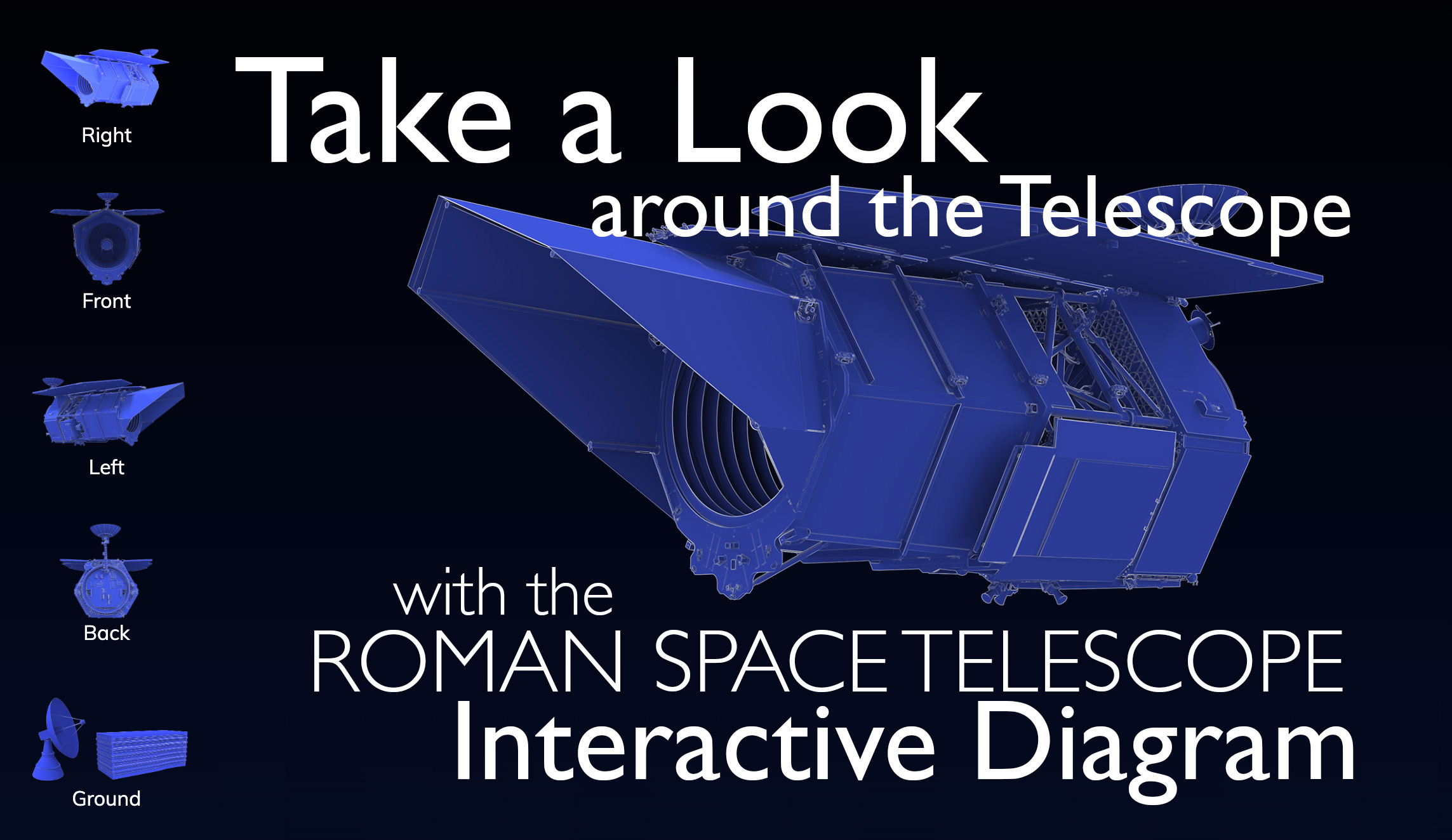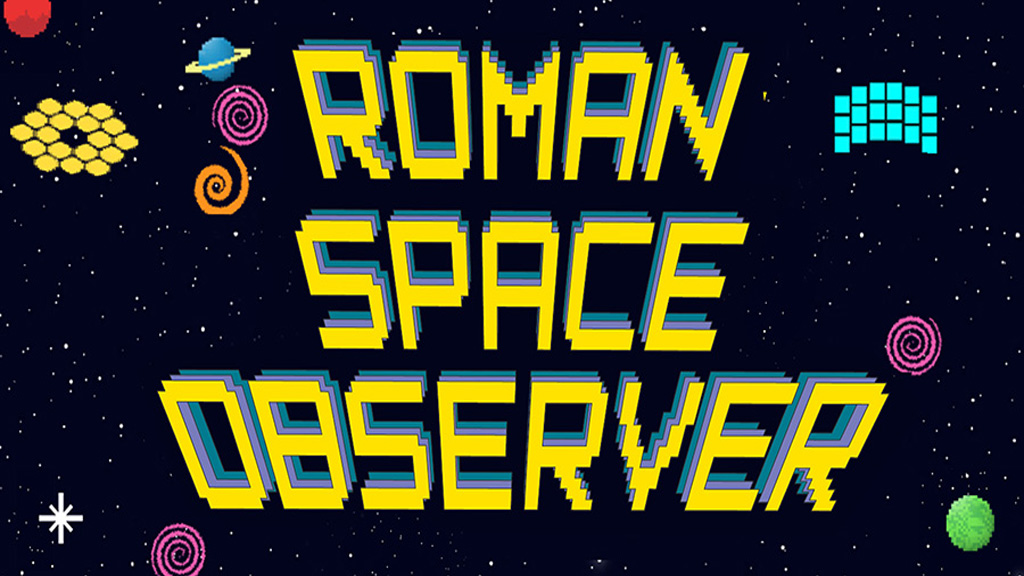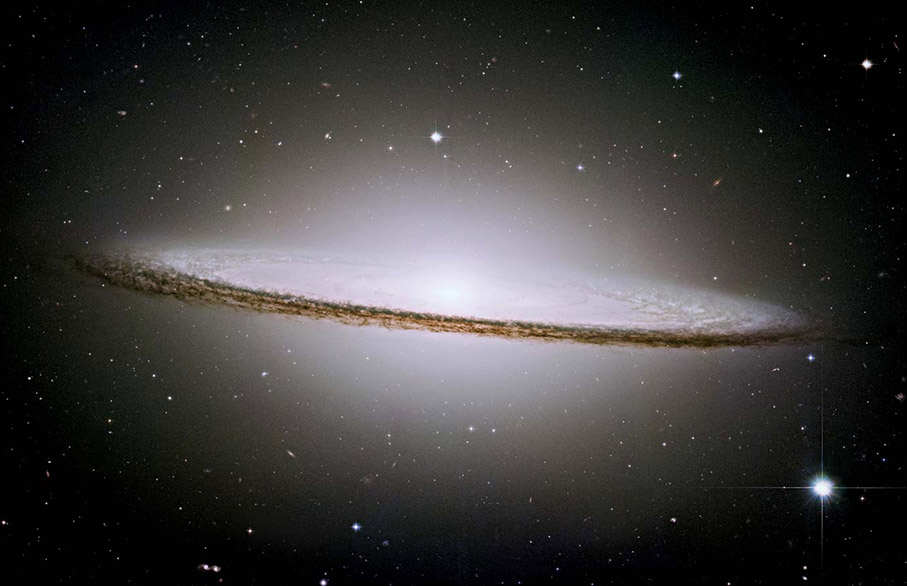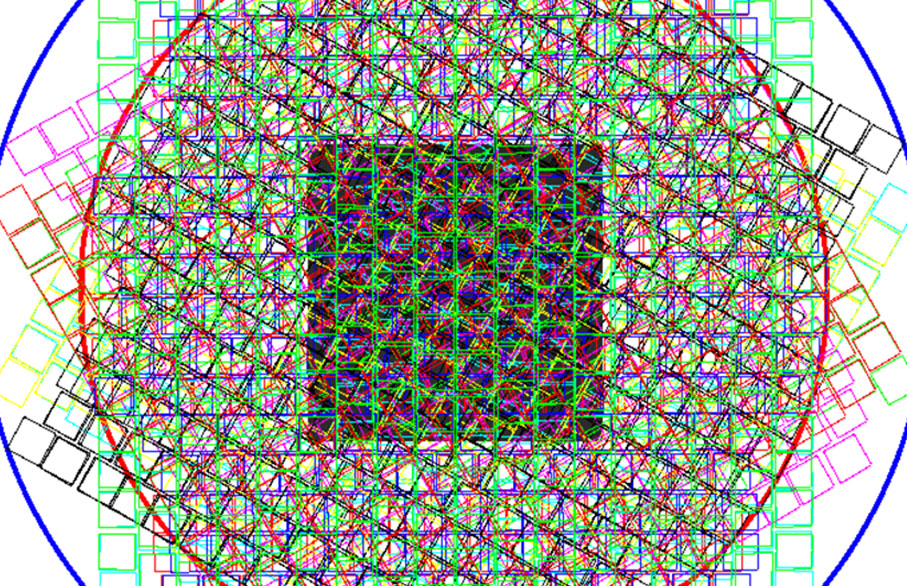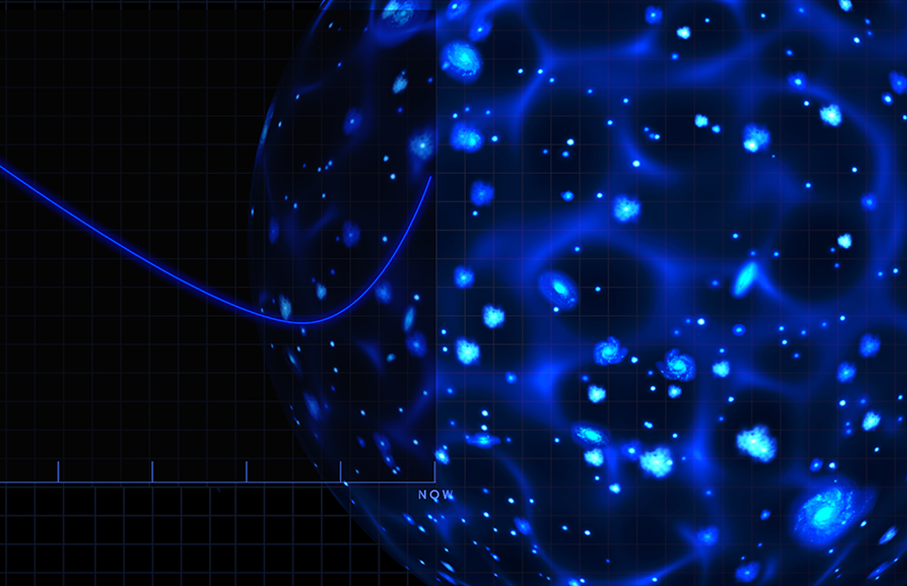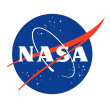Core Community Survey Definition process
The first five years of the Nancy Grace Roman Space Telescope’s observing program will be a mix of large, community defined surveys (the Core Community Surveys) with the Wide Field Instrument (WFI); competitively selected, principal investigator-led General Astrophysics Surveys with the WFI, nominally comprising at least 25% of the Roman Space Telescope’s observing time; and a technology demonstration program with the Coronagraphic Instrument. Roman’s Core Community Surveys (CCSs), which combined are anticipated to use the majority of Roman’s observing time during the first five years, will enable a broad range of astrophysical investigations while meeting the Roman Space Telescope’s scientific mission requirements in cosmology and exoplanet demographics. Moreover, since all Roman data will be publicly available immediately, a large fraction of Roman users are anticipated to interact primarily, or exclusively, with Roman’s data archive. The variety of ways in which Roman users will interact with Roman and its data is reflected in a number of diverse opportunities available to the community to engage with the Roman Mission, both in preparatory activities before launch and during operations.
The planning and preparation to enable and maximize the rich scientific return of Roman’s observing program has already begun, and will continue up until, and after, Roman’s launch. This page summarizes current and future ways for scientists to become involved with Roman, including:
- Participating as individuals in the definition of the CCSs, via responding to requests for information from the Roman Mission, participating in workshops, or serving on or supporting the work of the community-led committees to be charged with defining the CCSs.
- Engaging deeply with specific topics via ongoing technical working groups.
- Applying for funding for preparatory activities before launch through NASA ROSES opportunities. This includes the selection of teams to provide infrastructure support for the CCSs, funding for investigators to undertake more general science preparation activities for maximizing the return from Roman WFI datasets, and the Coronagraph Participation Program.
- Participating in Roman Science Collaborations, which will be formed to grow community networks, explore Roman’s capabilities in different science areas, prepare for analysis of Roman’s large datasets, and provide collective, consensus-based input into Roman Mission planning.
- Applying for observing programs or funding during Roman operations to analyze Roman datasets via regular calls for General Investigator proposals, including opportunities for archival funding and for principal investigator-led General Astrophysics Surveys. The first call is anticipated to be 1 year prior to launch.

Community-led Definition of the Core Community Surveys
Roman's CCSs will be defined by the astronomical community and will include a High Latitude Wide Area survey, a High Latitude Time Domain survey, and a Galactic Bulge Time Domain survey. The process for defining the CCSs is summarized here, with the anticipated avenues in which individuals can contribute to the definition of the CCSs highlighted.
Roman’s primary science objective is performing astrophysics with wide area near-IR surveys. The cosmology and exoplanet science requirements for the CCSs leave significant parameter space available to define the observational strategies (filters, depth, cadence, etc.) in a way that will enable a broad range of other astrophysical investigations. The goal of the community-led definition of the Roman CCSs is thus to determine an observational strategy for each that will maximize their expansive scientific impact by enabling a broad range of astrophysical investigations while providing the observations needed to meet Roman’s science requirements in cosmology and exoplanet demographics.
Given the range of science topics that each survey will be capable of addressing, the Roman mission will define the CCSs via an open, inclusive, and collaborative process implemented by the Roman Science Centers at STScI and IPAC. Multiple mechanisms will be provided for individuals and groups with diverse science interests to provide input into the survey design. The surveys will be community owned. They will not be directed by a single team, and there will be no proprietary period for any Roman science data.
Initial Community Input
TThe community-led definition of the CCSs is being initiated with an open call to all astronomical community members to provide information on the science investigations they wish to see enabled by the design of the CCSs. The purpose of the call is to solicit from the community descriptions of specific scientific investigations that can be achieved with the CCSs, the observational strategies that will enable these investigations to be performed with a given CCS, and the metrics or figures of merit that can be used to assess whether an observational strategy will enable a particular investigation.
To maximize participation, the Roman Mission is offering two avenues for members of the community to provide information on science drivers and the requirements they place on the design of the Core Community Surveys: a short, one to two paragraph 'science pitch' (including a questionnaire) requested by February 17, 2023, and/or submission of a more technical-focused white paper, anticipated to be due in late spring, 2023. The full text of the call provides additional context on how the responses will be used.
The CCS Definition Committees
The Roman Mission will use the results of the initial community input to form committees for each CCS composed of members of the astronomical community who represent the breadth of science the community wants to see enabled with each CCS. These committees will be formed in mid-2023 and will be charged with defining the CCS observational strategies in a way that maximizes the science that can be achieved with each survey, and represents the interests of the full astronomical community.
The CCS definition committees will use the initial community input to
- identify the most promising synergies between general astrophysics and the drivers of the science requirements for each CCS,
- determine where additional investigative work is needed (e.g., to define appropriate metrics for a science investigation or determine if a science investigation is feasible within constraints),
- discover areas where community consensus-building is needed (e.g., where there are significant discrepancies in strategy for the similar science investigations),
target additional requests for community input, and
- inform the programs and agendas for later follow-up community workshops on the CCS survey definition.
The CCS definition committees, with the support of the Roman Science Centers at STScI and IPAC, will continue to engage with the astronomical community as they consider observational strategy trades and their impacts on science investigations while iteratively developing the survey concepts.
As one concrete example, in order to meet Roman's dark energy goals, a requirement on the design of the imaging component of the High Latitude Wide Area Survey is to enable precision measurements of the shapes of hundreds of millions of galaxies. This leaves open significant parameter space for the survey data to be relevant for other science areas. Depending on the choice of filters, the data may be more (or less) useful for studies of galaxy evolution. Depending on the chosen balance of area versus depth, there may be more (or less) opportunity for discovering new celestial objects that are rare per unit area. Moreover, all of these choices may affect how useful the survey data are for studies of more nearby objects, such as those belonging to the Milky Way halo or solar system. There are anticipated to be many other such trades related to this survey, as well as to the other Core Community Surveys.
Determining the Final Definition of Roman’s CCSs
Each of the CCS definition committees will be charged with providing the Roman Mission with several survey options, and an analysis of the impact on various science investigations for each option. These will be provided to a Roman Observing Time Allocation Committee (ROTAC) committee, also composed of community members representing the full breadth of science investigations, that will be charged with making a final recommendation to the Roman Mission on the balance between each of the CCSs, as well as between the CCSs and the general astrophysics survey allocation. The CCS definition committees will then be tasked with providing the Roman Science Centers with survey definitions that are sufficiently detailed that the Science Centers can schedule the observations.
This process is planned to be completed 18 months before launch, to provide time for the Science Centers to implement the surveys and the astronomical community to prepare for the first call for principal investigator-led programs.
Additional reviews of the CCSs by community-led committees will be planned prior to launch and approximately one year into observations, in order to take into new information on observatory performance.
The Roman Mission previously solicited community input on whether to pre-select an Astrophysics Survey, as well as outlines of survey concepts which would benefit from being selected and defined well before Roman's launch (e.g., to enable synergistic observations with other facilities) and with scientific aims that cannot be accomplished with the CCSs (e.g., pointing at specific nearby galaxies or the Galactic plane). A committee of community members has been charged with reviewing the submissions and making a recommendation to the Roman Mission on whether one or more Early-Definition Astrophysics Surveys should be included in Roman's observing program. If the Roman Mission decides to move forward with an Early-Definition Astrophysics Survey, it will be defined through a community process, in a similar manner as described above for the three CCSs.
Joining Roman Science Collaborations
The formation of community-led Science Collaborations will be facilitated by the Roman Mission. The goal of the science collaborations will be to enable people to engage with Roman science independently of NASA-led, peer-reviewed selections for funding or observing programs, for example in preparing to analyze data on the scale of Roman surveys for specific science investigations. Multiple Roman Science Collaborations will be formed, covering the anticipated primary areas of Roman science. Collaboration areas may include topics such as time domain science, nearby galaxies, and galaxy evolution, well as dark energy and exoplanets.
The Roman Mission will work with the community to shape the definition and charter of the collaborations and will provide organizational support. The formation of the Roman Science Collaborations is anticipated to begin in mid-2023, after the selection of funded teams and individual investigators from the 2022 Roman ROSES call. Project Infrastructure Teams funded through the Roman ROSES opportunity are expected to be core participants in these community-organized collaborations, and thus are expected to help shape them. However, the Science Collaborations will be open to, and are expected to be driven and organized by, all interested community members, following the successful model of the Rubin science collaborations. They will support their members and the broader astronomy community in preparing to most effectively utilize Roman’s unique observational capabilities and analyze Roman’s large survey datasets.
Engaging with Project Partners on Specific Technical Topics
The Roman Mission convenes a number of Roman Technical Working Groups tasked with exploring technical topics, gathering diverse input, and collaboratively solving issues related to the development of infrastructure for the Roman Mission. These working groups provide a forum for the Roman Project, the Roman Science Centers, and the science community to work together on topics that cut across science areas. The focus, membership, and activity of these working groups change over time, according to Roman’s development needs. Examples of working groups include groups focused on calibration, astrometry, software development, simulations, detectors, and spectroscopy. Information on currently active working groups and instructions on joining, including expectations for those who join, is available here.
Funded Preparatory Science Activities
Members of the science community at US institutions can apply for support to participate in Roman preparatory science activities via the Roman elements of ROSES solicitations.
A previous ROSES solicitation in 2015 funded Science Investigation Team that provided input to the Roman Mission through 2021. A workshop was held in November 2021 presenting the outcomes of the Science Investigation Teams’ activities; both videos of the presentations, and copies of the presentation slides are available.
The current Roman ROSES solicitation, released in December 2022 and due March 21, 2023, provides opportunities for US scientists to apply for funded participation in the development of the Roman Project in one of three ways. A broad range of science preparation activities can be funded through Wide Field Science investigations. Significant and sustainedl funding to develop the scientific infrastructure needed for the community to achieve Roman’s science goals can be obtained through a selection as a Project Infrastructure Team. Selections for membership in the Coronagraph Community Participation Program (CPP) Team will provide the opportunity to work collaboratively with the Roman Coronagraph Instrument team and the IPAC Science Support Center to prepare for the in-space technology demonstration. Click here for more details.
A second Roman ROSES solicitation for preparatory science activities is anticipated to be offered approximately two years before Roman’s launch. It is expected to provide additional opportunities to fund preparatory Wide Field Science investigations.
General Investigator Opportunities
As Roman approaches launch and enters operations, additional opportunities to engage with the observatory will begin. Throughout Roman operations, there will be regular calls for Principal Investigator-led Roman General Astrophysics Surveys, as well as for funded archival programs. Funded General Investigator programs will use the wealth of data in Roman’s archive to perform all manner of astrophysical investigations, including addressing Roman’s cosmology and exoplanet demographic science goals. The selection of these programs will be made via a peer review process. The first of these calls is anticipated to be made approximately one year before Roman’s launch, after the definition of the CCSs is complete.




